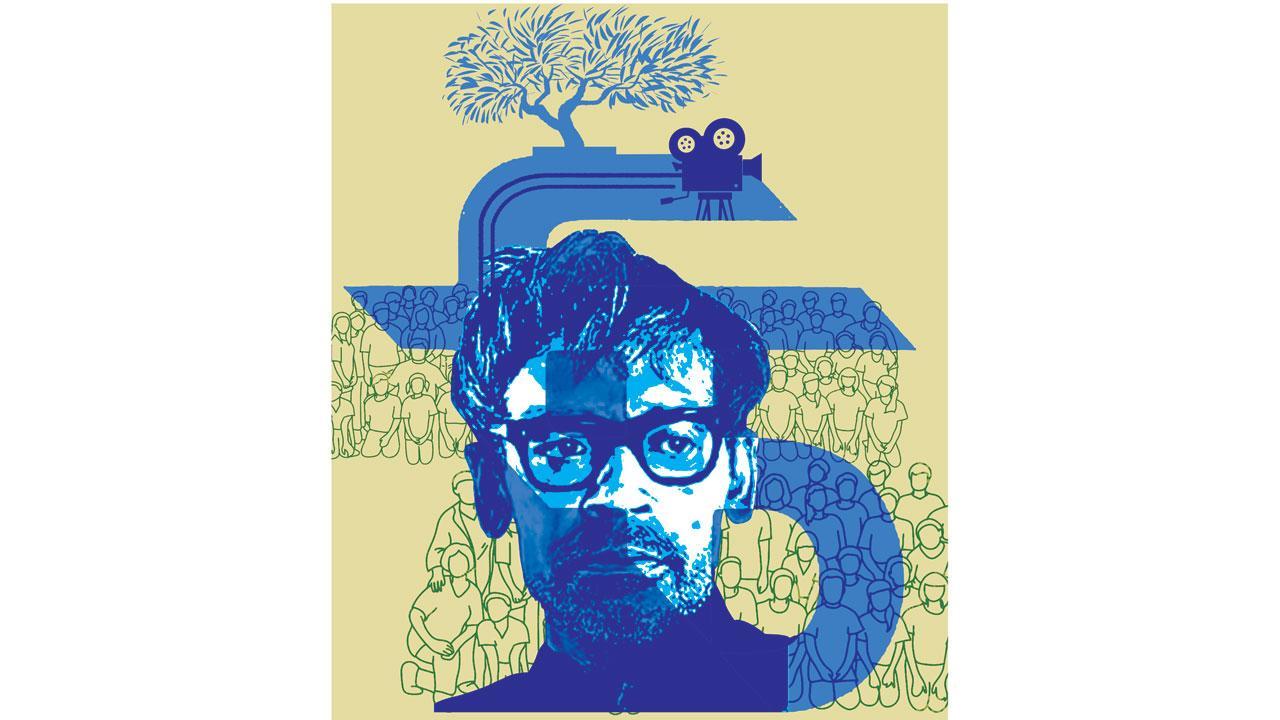Established in 1960, the FTII is, of course, India’s premier institution for teaching film and TV, famous worldwide

Illustration/Uday Mohite
Did you know that distinguished filmmaker Mani Kaul acted in a film, that too, along with Subhash Ghai and Asrani? Now guess who directed it? Malayalam director Adoor Gopalakrishnan, doyen of India’s independent cinema movement. Anything is possible at the Film and Television Institute (FTII, Pune); this happened during Gopalakrishnan’s diploma film Light (1965). This is one of the many gems in Being FTII: Perspectives on the Film and Television Institute of India, a coffee table book commemorating the institute’s diamond jubilee, celebrating 60 years. There are more gems—Subhash Ghai claims to be the blue-eyed boy of, hold your breath, Ritwik Ghatak. And Sriram Raghavan tells us of British director David Lean visiting FTII: his wife Leila Matkar (Wife No. 4 of his six wives, wow!) had family in Kolhapur and brought him to the institute. Your jaw keeps dropping, and you have to keep collecting it from the floor.
ADVERTISEMENT
Established in 1960, the FTII is, of course, India’s premier institution for teaching film and TV, famous worldwide. Its alumni are legion, and films by its students and alumni are at festivals worldwide, as well as at the box office. I have an old connection with FTII: I did the film appreciation course (FAC) there in 1992, and have returned a number of times as guest lecturer for the FAC. In fact, I was to conduct a course on Curating Films for Film Festivals on campus in April 2020, but COVID-19 forced us to rethink the plan. Being FTII is edited by Amit Tyagi, FTII Dean, Films, 2016-18; the project coordinator is Film Research Officer Dr Debjani Halder, with design by Vikram Varma. FTII Director Bhupendra Kainthola led the project, published by the Publications Division, Ministry of Information and Broadcasting.
The book has lively contributions and memoirs from, and references to, illustrious alumni in various disciplines. Filmmakers who are FTII alumni include Gopalakrishnan, Kaul, Ghai, Sriram Raghavan, Vidhu Vinod Chopra, Rajkumar Hirani, Kamal Swaroop, Shaji Karun, Anup Singh, Girish Kasaravalli, Jahnu Barua, Amit Dutta and Arunaraje Patil. Acting alumni include Shabana Azmi, Om Puri, Jaya Bachchan, Naseeruddin Shah, Mithun Chakraborty, Shatrughan Sinha, Rajkummar Rao and Tom Alter; alumni from other disciplines include KK Mahajan and Balu Mahendra (cinematography), and Renu Saluja (editing), among scores of others.
Ghai writes about Ghatak, then Vice Principal: “He was even more brash than all of us. I watched all his Bengali films and loved them. They left a huge impact on me. He cast me as a monk in a student short Vasavdutta… I became his blue-eyed boy.” Raghavan shares acting alumnus Asrani’s nuggets about Lean. Shown some student films, Lean said, “‘Who are you making the films for? I can tell you which shot is from which German or Czech or French film. You should watch the films of V Shantaram and Bimal Roy too.’ He told the teachers, ‘Something is wrong with your teaching.’” Jahnu Barua writes the most wonderful, moving account of the penance demanded of an FTII student. Having travelled from Assam to Pune for the FTII entrance exam in 1971, he was asked, “How would you rate Mrinal Sen as a filmmaker?” “If I become a filmmaker, I will not make his kind of films,” he replied. Soon, the exam was over: someone told him Sen was on the panel. Horrified, he packed his bags and left for the railway station, where another applicant informed him he had been selected.
Later, Mrinal-da told him, “Jahnu, I am Mrinal Sen. I have selected you and I expect a lot from you.” Broke, Barua slept for three nights in Sambhaji Park, till his brother sent his admission fees. Azmi recalls being encouraged to draw from life experiences when acting. During Mahesh Bhatt’s Arth, when she begs her husband for one more chance to make their marriage work, she writes, “I was so affected, that I sobbed uncontrollably for about an hour after the director had shouted ‘Cut!’” Amit Dutta writes an affectionate account in Hindi, of learning film appreciation from Prof Satish Bahadur and Prof Suresh Chabria. There are also contributions from other craftsmen, including Bishwadeep Chatterji (sound designer), Bipin Naria (cinematography), Arghyakamal Mitra (editing), Abhijeet Deshpande (screenwriting) and Laxmi Keluskar (production design).
Being FTII is a vital historical document, including precious archival photographs, film stills and posters, and a lovely illustration of the famous ‘Wisdom Tree.’ Of course, everyone will have a list of persons missing from the book. Still, it does give us a flavour of the wonderful and tumultuous times of discovering film, by those who have shaped our cinema today. We leave with borrowed memories, like cinematographer GS Bhaskar’s remembrance of “Shetty canteen’s double omelette and kadak-meetha.”
Being FTII: Rs 850+postal charges; to order email Debjani Halder ftiidiamond@gmail.com
Meenakshi Shedde is India and South Asia Delegate to the Berlin International Film Festival, National Award-winning critic, curator to festivals worldwide and journalist.
Reach her at meenakshi.shedde@mid-day.com
 Subscribe today by clicking the link and stay updated with the latest news!" Click here!
Subscribe today by clicking the link and stay updated with the latest news!" Click here!







